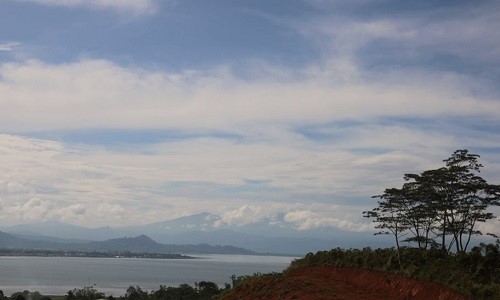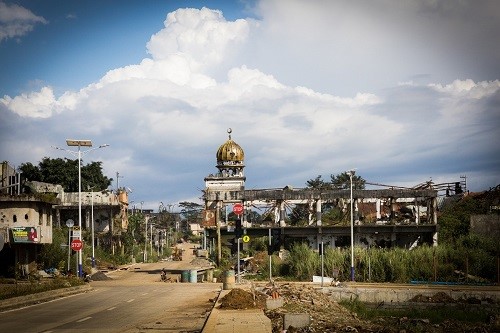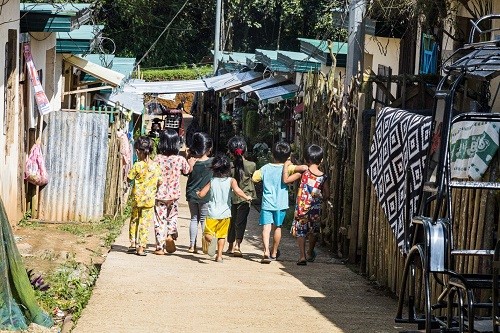Raine (not her real name) was only 4 years old when the Marawi Siege happened in May 2017, but the child can vividly recall the pictures of anguish, fear and destruction in her hometown.
“I remember we were running. I saw houses burning. I could also hear gunshots. My neighbors, my aunt and my uncle were crying. But me and my siblings were just looking at them,” Raine shares.
Raine, now aged 9, is one of the many children whose family fled from Marawi City after the Philippine government troops and armed groups clashed for at least five months.
The violent armed conflict forced most residents of Marawi City to flee to nearby towns of Iligan City and Cotabato City. Roads in and out of Marawi City were blocked both by the military forces and other armed groups. Reported hostage-takings and killings of civilians became rampant during the hostilities.
Raine’s mother, Asli (not her real name), shares what she saw during when they fled. “I remember stepping on dead bodies on the street as we were hailed by the military, asking us where are we going. We told the soldiers to let us pass because one of my relatives is giving birth. We were crying because we thought it would be the end of us, even the children might be killed.”
From May 2017 to the end of 2019, the Philippine government declared martial law in the entire Mindanao island to maintain and restore peace and order.
People of the lake
How did Marawi City look like before the siege?

Marawi City, the capital of Lanao del Sur province in Mindanao, south of the Philippines, used to be a thriving town of merchants, farmers and fishermen. The residents, known as the Maranao, mostly live around Lake Lanao, the second largest lake in the Philippines, thus the Maranao is also known as “the people of the lake.”
The Maranao are predominantly Muslim, making Marawi City the only Islamic City in the country. The Maranao are known for their colorful mythical bird called Sarimanok, musical instrument kulintang, and their traditional dance Singkil.
Asli remembers the beauty of the city. “I used to do laundry in Lake Lanao in the early morning. Then I’ll go home and prepare meals for my children. My husband would ply the busy roads with his tricycle. He would usually earn around Php500 a day.”
Even her daughter, Raine, recalls how she would play with her friends, who were on the next floor above them. “We would play dolls for hours. I’ll only go home when it’s nighttime.”
Raine recalls visiting a shopping mall occasionally with her mother. “But I couldn’t remember now what we used to buy there,” the child says.
On the day of the siege, Asli says, she heard rumors of armed groups being in the city, but they thought those were mere rumors.
“The next thing we knew, we had to run for our lives.”
The United Nations High Commissioner for Refugees (UNHCR) estimated that 98% of the city’s population, as well as nearby towns, were displaced at the height of the siege.
Road to recovery
When residents, who were allowed to briefly return to the city to recover what they could from their community, were in utter shock to see that their city bears no resemblance to the one they used to call home. Explosives damaged many buildings that were once houses and businesses. The streets that used to be bustling with merchants, students and workers were empty.

It was in the early part of 2020 when the Philippine government began its rebuilding program in Marawi City spearheaded by Task Force Bangon (Rise) Marawi, composed of different Philippine government agencies.
Today, many parts of the city are gradually recovering.
“Businesses are opening and families are returning to their homes. But in MAA or the Most Affected Area, also known as ground zero, there are still families who haven’t returned yet,” Adonis Casinillo, World Vision’s Childhood Rescue Project Manager, says.
It is estimated that around 17,000 families, who previously lived in the most affected area (MAA) or ground zero, are still living in temporary shelters that oftentimes lack the necessary services for health, education, water and food.
“Life is difficult especially since we are merely leasing this house,” Asli says, referring to a small house with one room, where the family sleeps together at night. The house is void of cabinets, chairs, and tables. “It’s difficult because we have nothing. We have no money.”
Asli explains that the Covid-19 pandemic exacerbates their situation. During months of lockdown, the family didn’t have enough money to buy food because nobody was allowed to go out of their houses. Her husband who earns a living by driving a tricycle stayed home during those times.
“That’s why he had little income. If our budget is not enough, my husband and I will not eat so our children can eat,” she says.
Although life is difficult, Raine says that the only thing that makes her happy now is when her friends visit her to play. But she still yearns to go back to their old city.
“I want to live there because my friends live there.”
Together we can protect vulnerable children

Our focus is on helping the most vulnerable children overcome poverty and experience fullness of life. We help children of all backgrounds, even in the most dangerous places, inspired by our Christian faith. Together we can protect children today, and empower them for tomorrow.








